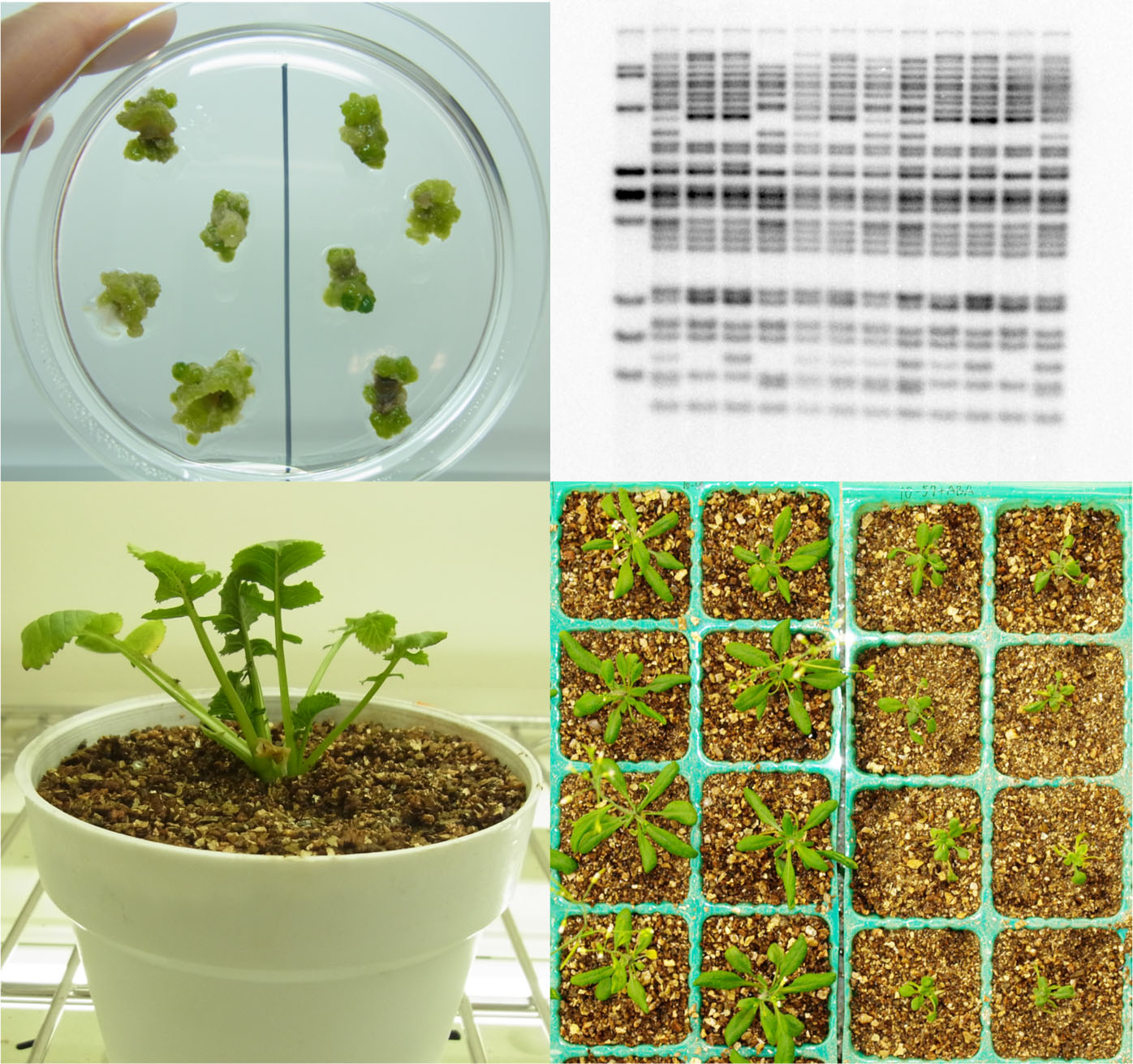Research contents
All organisms have much information to make and maintain their body. The transgenerationally inherited information is called genetic information. Based on the information, biologically functional proteins are produced with gene expressions. Genetic information is not always expressed; rather the information is switched on and off by suitable timing through life span. A mechanism of gene regulation contains an important issue when understanding how our body is made and how it works. Genetic information is transcribed to a messenger RNA and translated to an amino acid. Recent studies showed that gene expression is regulated by epigenetic modifications that include DNA methylation and histone modifications and also controlled by RNA molecules. We study the mechanism of gene regulations by using genetics and molecular approaches in plants.
Also, is has been appeared that gene expressions and transposon activations are affected by environmental stress. In nature, high copy numbers of transposons are conserved in many species. This may imply that transposons have been activated by environmental stress and changed the genome structure of a host genome. A transposition may cause mutation of a host gene. Sometimes the mutation promotes genome evolution and gene diversity that can adapt a new environment. We study the effect of environmental stress in plants. We focus on the regulation mechanism of stress-activated transposons and analyze the relationships between the transposons and the host genome.
Research 1 Regulatory mechanisms of gene expression in Plants
Research 2 Regulation mechanism of transposons in plants
Research 1 Regulatory mechanisms of gene expression in Plants
Regulation of gene expression is the cellular control of the amount and timing of appearance of the functional product of a gene. Controlled gene expression is the essential to life. The amount of protein depends on the tissue, the developmental stage and the metabolic or physiologic state of the cell. Therefore, gene regulation gives the cell control over structure and function, and is the basis for cellular differentiation, morphogenesis and the adaptability of any organism. Gene expression is a multi-step process that begins with transcription, post-transcriptional modification and translation, followed by post-translational modification and targeting. The gene expression may be controlled at any of several stages, which contain from the transcription step to post-translational modification of a protein. The control of gene expression is fundamentally performed by the combination of cis-elements and trans-elements. Many proteins were known as the trans-elements. Recently, the mechanisms, which RNA molecules controlled the gene expression were reported. Some studies revealed that small RNA molecules have the capacity to regulate gene expression at the transcriptional level and post-transcriptional level. In Arabidopsis thaliana, more than 100 small RNAs have been found and some of them play a crucial role in development are reported. On the other hand, genome projects revealed that the extensive population of non-coding RNAs in many organisms. It is speculated that they function as trans-elements for regulation of gene expression, but their functions have been unknown without some exceptions.
We investigate the genetic control of the development in Arabidopsis thaliana. The main interest is the control mechanisms of gene expression, especially the role of RNAs for gene expression. Our research effort in recent years concentrated on the following subjects: 1) Functional analyses of the non-coding RNAs in Arabidopsis thaliana; 2) Functional analyses of RNA binding proteins in Arabidopsis thaliana. For these objects, we used the methods of the genetics and molecular biology.
Research 2 Regulation mechanism of transposons in plants
Transposon was first reported in plant and this finding was awarded a Nobel Prize in 1983. Transposons exist in almost all eukaryotes and we now know they are important elements on the genome. After complete genome sequencing, many interesting findings have been reported about the expressions and transpositions of transposons in several species. It is worth to mention that transpositions of transposons may become a powerful force to the genome evolution. Transposons are one of the main elements in the genomes of many species. Recently it has become clearer that they have several important biological functions. Some multi-copy transposons within heterochromatic regions play a role in stabilizing genomes. It has also been reported that transposon insertions near genes can alter gene expression. Most of the transposons are silenced because of their methylated DNA and histone modifications. However, under specific conditions, transposons can be activated and transposed. Our interest is how environment affects transposon activation in nature. I focus on the relationship between environmental stress and transposon regulation.










